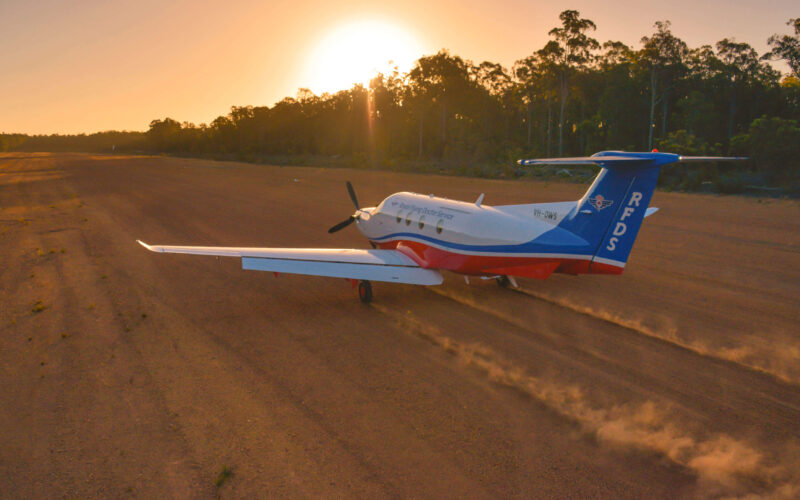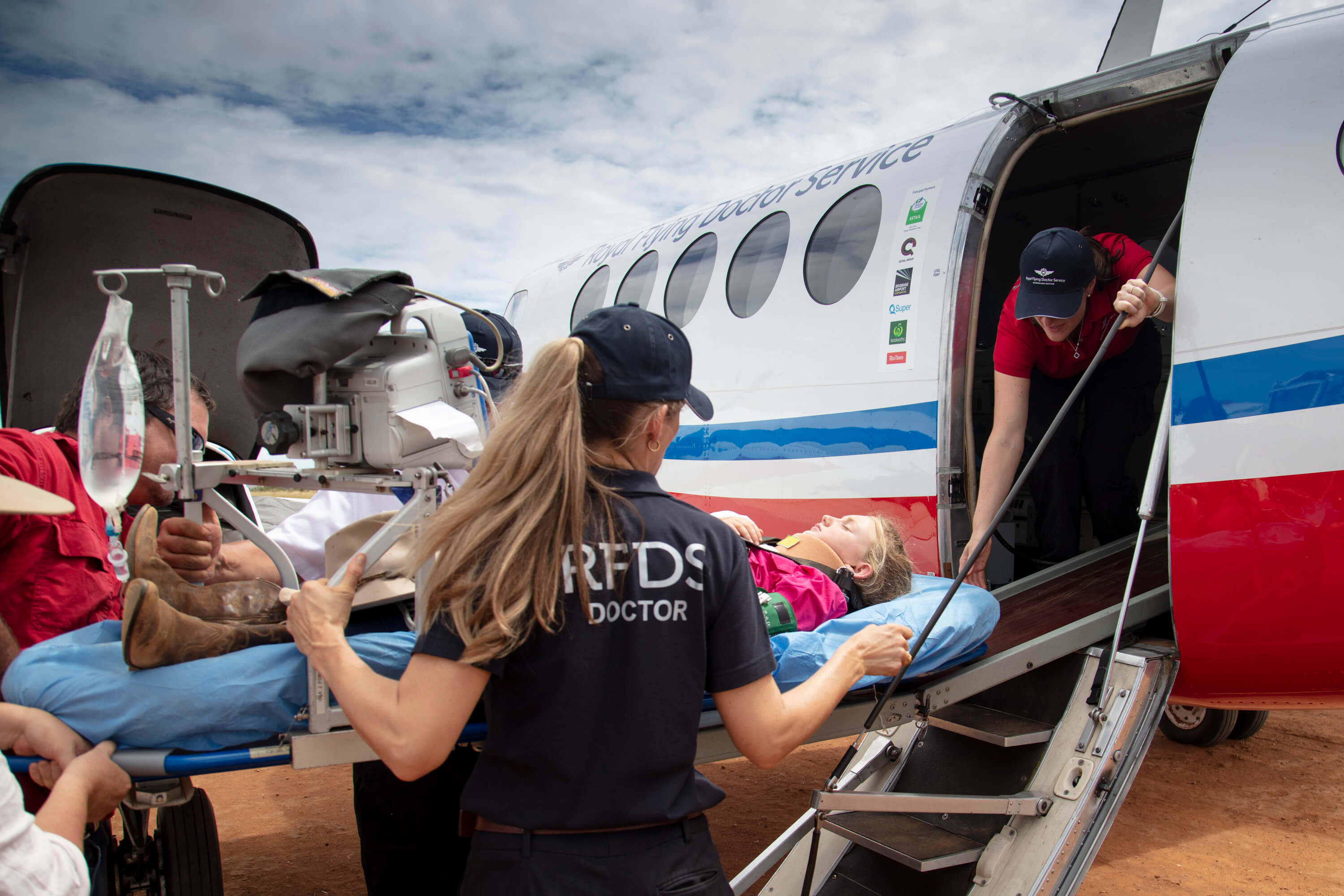Describing itself as Australia’s largest waiting room, The Royal Flying Doctor Service of Australia has been helping to save lives for decades. It’s a service that’s unique to Australia, where the major cities are clustered around the coast, but some people still live in the vast and remote Outback, hundreds of kilometers from the next town.
The service was set up back in 1928 by Reverend John Flynn to provide medical help to remote regions of the Australian Outback. Up until that point, there was little medical assistance available for the pioneers who lived far from the cities of Australia. If anyone was injured, they had to travel hundreds of kilometers via horse, cart or even camel to reach help, with many dying before they got to a doctor.
The idea of using aviation to provide medical help was suggested to Reverend Flynn by medical student Lieutenant Clifford Peel back in 1917. Tragically, the young airman was shot down in France at just 24 years of age.
It took another decade before Flynn was able to set up the Aerial Medical Service (which later became the RFDS), thanks to a large bequest. The first flight took off from Cloncurry on May 17, 1928, using a single-engine bi-plane named Victory leased by QANTAS, itself founded in 1920.
In its first year, the Aerial Medical Service flew 50 flights to 26 destinations and treated 225 patients. Today, celebrating its 94th birthday in May 2022, the RFDS operates a fleet of 79 aircraft, comprising the Pilatus PC-12 and PC-24, the King Air B350 C and B200 C and the Beechcraft King Air 360CHW. It helps more than 1,000 people each day from its 23 bases across Australia.
The work of the Flying Doctor service has been dramatized several times for TV and film, with the latest incarnation hitting Australian screens in 2021.
AeroTime spoke to David Stanley, who has been a King Air pilot with the RFDS for almost 16 years, about the work he does. After working as a flight instructor, Stanley spent six years operating medical flights in the Caribbean before returning to Australia and starting with the RFDS.
“It’s different from everyday flying, more serious. People’s lives could depend on your plane and your flying ability. It’s something special and it can really make the difference in someone surviving,” Stanley explains of operating medical flights.
Stanley, who is 50 years old and has been flying since he was 19, is based in Dubbo, almost 400 kilometers via road from Sydney, the capital of New South Wales.
His work takes him across Australia’s different landscapes, and he says he enjoys all the variety the country offers.
“One day you’ll fly out west to a cattle station, where it’s very dry, and then you’ll go to Adelaide, which is right on the coast,” Stanley explains. “Or you’ll fly down to Melbourne, which is very lush and then on to Tasmania. In one shift, I’ve been to four states in one day and seen basically half of Australia.”
Stanley also adores Australia’s spectacular sunsets and sunrises and regularly adds photos to his LinkedIn page. “I’ve only got about 2,000 pictures on my phone,” he said with a laugh. “Every flight I do, I like to put a photo up and let people come along for the journey.”
Hunting for the airstrip
The first flying doctor pilot, Arthur Affleck, had no fancy navigational aids and no radio. He had to use landmarks such as fences, rivers, dirt roads or wheel tracks and telegraph lines. Never mind runways, Affleck had to land on claypan soil or paddocks.
While it’s certainly easier to navigate and there’s more airstrips around these days, it’s not without its challenges for the RFDS pilots.
A video posted online by the RFDS shows how local communities help to clear and light airstrips for night landings.
RFDS has a base at Broken Hill, an isolated mining town that’s in the far west of New South Wales in the Outback, about 500 kilometers from Adelaide.
“The second day I started in Dubbo, I went to a cattle station about an hour and a half from Broken Hill,” Stanley recounts. “It took me about three hours to get there. And it was so hard to visually identify the station. I had a map, but it was done a few years previously and it’s just cattle property round there.”
Once he had identified where he was aiming for, landing was the next challenge.
“It was a dirt strip, unpaved, rocky and it wasn’t level. The rocks were pretty sizable, enough to do damage to the propeller,” the King Air pilot says.
But land he did, picking up the patient, who had suffered third degree burns and getting him to Adelaide for treatment.
“It was interesting. I had just started, and it was already the second time I had gone to a place that I’ve never heard of. It’s part of the job. You never know where you’re going, what you’re doing and it’s an adventure.”
Night shift
It’s not every day that Stanley doesn’t know where he’s going. Aside from the ambulance shifts, RFDS also provides non-emergency transport and a mobile dental clinic.
Even now, there are communities without permanent dental services in Australia. So, the RFDS provides a service whereby pilots like Stanley fly a senior dentist plus clinicians or nurses to a location, where they will operate a pop-up clinic for the day. Sometimes, Stanley drops off the dental practitioners, then flies on to a separate destination with other medical staff, then returns to pick up the dentist.
“It’s proving really vital. When you visit these country towns, you often see children walking around with bottles of coke and sugary drinks and they have no teeth left.”
Of course, flying for the RFDS involves shift work, with the week often starting with an early shift and finishing on a night shift.
Stanley says the RFDS has a really good fatigue management system, as well as providing support should staff be affected by any difficult cases.
“The staff will know when you’ve had a bad day. If you need time off, that’s ok,” he says.
Cargo doors
It’s all single-pilot operations for Stanley. But he’s never on his own, being responsible for the safety of the doctors and nurses, as well as the patients. He always flies with a nurse, with a doctor joining around 50% of the time if required.
Trips to retrieve a patient and bring them to a hospital generally take around 2-3 hours on average.
Aeromedical rescue. Credit: RFDS
The RFDS fleet is specifically modified for the work it carries out. The King Air has a cargo door that has been altered so it can accommodate stretchers. The aircraft also has to be able to carry medical equipment and “retrieval packs”, which stay on the plane in case the crew are called on at short notice.
Stanley does have an A320 type rating, but says he is happy with the RFDS. It’s clear from our conversation that Stanley is proud of the work he does and how it makes a difference to remote and rural communities.
“I’ve never done airline flying or jets, maybe one day. But I definitely like this lifestyle and the people I work with. At the base in Dubbo there’s about 100 staff and it’s just like a big family,” he says.


